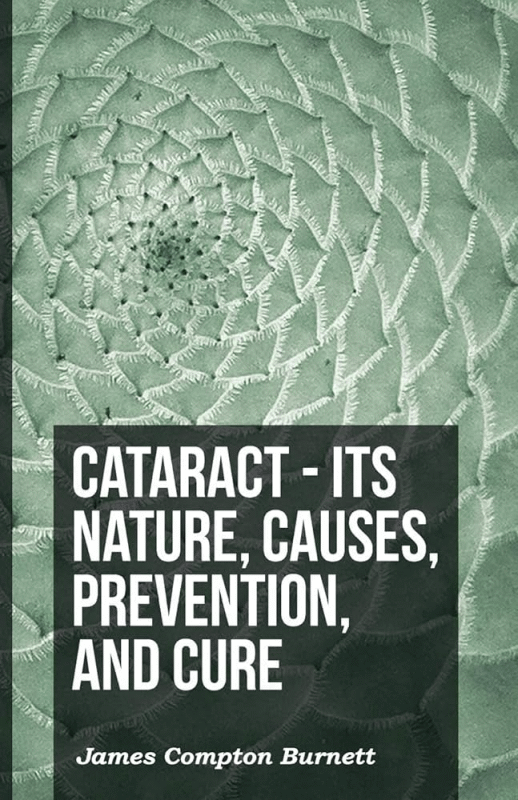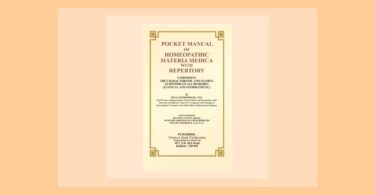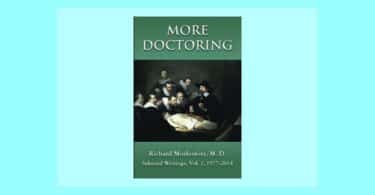Cataract: Its Nature, Causes, Prevention, And Cure
By J. Compton Burnett, MD
Reviewed in Homeopathic World – Vol 24, October, 1889
Available on Amazon.com $11.57
https://www.amazon.com/Cataract-Nature-Causes-Prevention-Cure/dp/B019WLIZSQ

Dr. Burnett’s interest in the subject of cataract and its curability dates from the year 1875, when he cured a case, as he put it, “by a fluke.” This led him to study the literature of cataract, and in 1880 appeared his brochure entitled “Curability of Cataract by Medicines.” Of his previous work he says in his preface: “I have endeavoured in the following pages to bring together the cream of what I have read, seen, and do know of the nature, causes, and cure of cataract. For this information I have gleaned in many fields, and wandered in more where there was unhappily nothing to glean. Cataract, having been declared immedicable by the schools, it is not astonishing that those who pass through the schools (for the most part like sheep through a gap), should live their practical lives as the mere echoes of their scholastic teachings, and thus it comes to pass that no progress is made in ophthalmic medicine. Indeed such a person as an ophthalmic physician does not, I believe, exist in Europe.” Dr. Burnett goes very fully into the subject of the anatomy of the crystalline lens, quoting from many authorities. He pays a great deal of attention to certain experiments on frogs by Kunde, who poisoned them with salt, with the effect of shrivelling up their bodies and producing temporary cataract. Diabetic cataract has, of course, long been known. Salt cataract appears to be like the diabetic, temporary only, that is, depending on the continuance of the salt poisoning, in the one case, and sugar poisoning in the other. One of the most interesting observations related by Dr. Burnett in his book is the occurrence of blindness in horses pastured on land near the sea where the water was brackish. This will be found in a letter to Dr. Burnett by Mr. Charles Rees, p. 108. As an example of Dr. Burnett’s own observations we will quote the following: “Tenth Observation. —Mr._ 79, came under my care on August 24, 1881. Had been operated on for glaucoma two years previously. The whole of the lens of the left eye is opaque and looks whitish; that of the right partly so. Moreover, he is almost stone deaf. He is highly mineralised, if I may so express myself. He is fond of salt and eats a great deal of it, and puts salt into his morning tub for a long time past. He is a fine old gentleman, but from the feel of his pulse, which also intermits, and from his general look, it is clear he is a moving man of mineral. How much his salt eating and salt bathing may have conduced thereto I cannot say— perhaps not at all. But this is certain, there is improvement in his vision since I began to treat him; he is sure he sees better, and his eyes do not tire so readily. He has left off his salt almost, and thus far (Dec. 7, 1881) has had Chelidonium Majus lx, Sticta Pulmonaria 3x, and Pulsatilla Nuttaliana 2. He has a little psoriasis of the lower extremities.” Dr. Burnett adds that this gentleman’s deafness almost disappeared whilst taking Puls. Nut, which was given because of edema on left upper eyelid. We should have been thankful to have had a little more of Dr. Burnett’s clinical experience in the cure of cataract than we are favoured with in this book. With regard to the treatment of Diabetic cataract he says, “Antisycotics, Antipsorics, and Hepatics are my mainstay, and Thuja, Sabina , and Cupressus I would specially recommend.” The most commonly indicated remedies are Sul., Psor., Calc. C., Silicea, Phos ., Puls., Chel. Regarding the connection between cataract and other morbid conditions of body besides diabetes and “mineralisations,” Dr. Burnett’s book must be consulted. The author has done a good work in insisting on extending our notions of what is curable by medicines. In these days of dense materialism the medical mind lazily gives up to the surgeon’s knife every possible disease. It should be the object of the physician to see that the surgeon as operator has as little to do as possible.






Cineraria maritima is one of the greatest remedies for cataracts. It needs to be used for about 3 months, 30C potency, one a day (can be taken dry for the first few weeks, then dissolved in water and stirred).
Hello Karina,
Is this for the beginning of cataracts or also for mature cataracts?
Thank you,
Riane